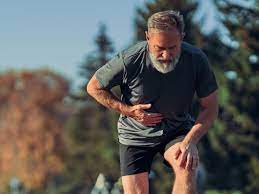If you’ve ever had a pulled stomach muscle, you know that it can be painful. The pain can come on suddenly, without warning, or even after you’ve exercised harder than usual. The pulled stomach muscle symptoms can last for weeks or months. In addition to being painful, a pulled stomach muscle can also cause post-op complications and digestive problems.
Symptoms
There are several symptoms that can indicate a torn stomach muscle. From pain and swelling to bruising and a gaping abdominal wall. If you are experiencing any of these symptoms, you should seek medical attention immediately. Symptoms of a torn stomach muscle can range from mild to severe, depending on the severity of the injury.
Abdominal pain is an often-reported complaint. It can be caused by a torn stomach muscle, a hernia, or some underlying medical conditions. A doctor can help you diagnose your pain by examining you and figuring out the exact cause. The pain is often acute but can also show up later on in the day. It’s important to differentiate this type of pain from normal muscle soreness, which will appear several days after a hard workout.
Nonsteroidal anti-inflammatory medicines can be helpful in relieving the pain and swelling. Make sure to follow the directions for taking these medications carefully. These nonsteroidal anti-inflammatory drugs are often associated with side effects, such as stomach bleeding.
Causes
Various causes can lead to the tear of the stomach muscle.The most common cause of separated abdominal muscles is pregnancy. The growing uterus causes the abdominal muscles to stretch. The two sides of the muscle can separate when the lining of the abdominal muscles tears. This can occur gradually during pregnancy or quickly during childbirth.
Separated abdominal muscles are common among women, especially those who have had more than one child. Women over 35 and small women who deliver larger babies are also at a higher risk for this condition. Several symptoms can develop, including pelvic pain, constipation, and weakness. Even hernias can occur.
Although abdominal muscle injuries may be uncomfortable, it is important to get medical attention. If not treated promptly, abdominal muscle injuries can lead to further damage to the surrounding tissues and musculature. In many cases, a medical procedure known as therapeutic ultrasound can help repair the abdominal muscle. This procedure is typically performed in a medical office.
The symptoms of a torn stomach muscle vary, but the pain associated with it is a good way to determine the cause. In severe cases, the pain may be so intense that it may be difficult to move, such as standing up. While a severe case may require surgery, it is often treatable by rest and gentle stretching. Taking precautions while exercising can also help prevent abdominal muscle strain.
Treatment
Treatment for a torn stomach muscle begins with a physical examination by a healthcare provider. They will ask you about the symptoms you are experiencing and will order a series of tests to diagnose any other issues. Then, your healthcare provider will prescribe some stretching and strengthening exercises and other physical therapies.
A torn stomach muscle is a serious condition. It can cause pain, difficulty moving, and may even necessitate surgery. The symptoms of a torn stomach muscle vary depending on the cause. Some common symptoms include abdominal pain that worsens with movement, discoloration, and marked tenderness.
Treatment for a torn stomach muscle may include ice packs, immobilization, and surgery.Tummy tuck surgeryis considered as a most effective treatment for this problem. In some cases, pain relief can be provided by nonsteroidal anti-inflammatory drugs. Taking these medications as directed will help you deal with the pain and swelling and minimize the amount of bleeding.
Exercises
One of the best ways to heal a torn stomach muscle is to start a rehabilitation program early on. This way, the abdominal muscles can be strengthened without overstretching. During rehabilitation, athletes should start with isometric exercises, which work a muscle without moving its associated joints. Then, they can progress to concentric exercises.
Dead bug exercise:
This exercise strengthens the abdominal muscles by engaging the muscles in a focused, controlled manner. Begin by lying on your back and contracting your abdominal muscles. Raise your left foot and then lower it. Repeat this exercise with your right arm and do three sets of five reps.
The chair position:
This exercise helps to develop endurance in your deep core. Ideally, your pelvis and transverse abdominis muscle work best in a neutral spine position. You can also try it by putting a towel or sheet around your waist. As you lift your calves, draw in your pelvic brace and slowly raise your torso up.
